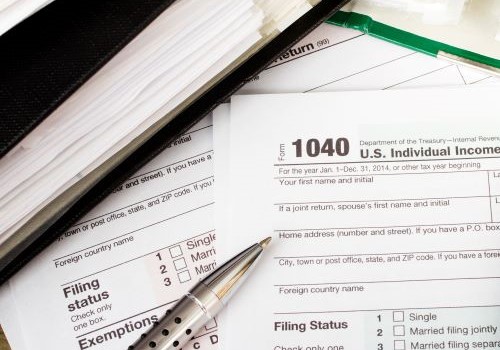BE THE LIGHT: BEST PRACTICES FOR SMOOTH TAX SEASON PREPARATION.
02/01/2024

As tax season begins, individuals are gearing up to tackle the complexities of filing their tax returns. To make this process more manageable and less stressful, it's crucial to adopt effective strategies and best practices. Below, we will explore the top practices for preparing for tax season this year.
1. UNDERSTANDING CHANGES IN TAX LAWS
Tax laws are subject to change, and staying informed about the latest updates is vital. Be sure to check the IRS website or consult with a tax professional to understand any modifications that may impact your tax situation. Being aware of changes ensures you can take advantage of new deductions or credits and avoid potential pitfalls or delays in receiving your return.
2. UTILIZE TAX SOFTWARE OR PROFESSIONAL ASSISTANCE
Consider using tax preparation software to streamline the filing process. These tools guide users step-by-step through both the federal and state tax return process. The tools provide prompts with questions for you to consider through each step, ensuring you avoid common errors to get the most out of your returns. If filing your taxes is not in your skill set, or you do not want to spend the time to prepare them yourself, you should consider hiring a certified tax professional. A certified tax professional can provide personalized advice to help guide you through the process of filing your taxes or can simply file for you, making the entire process less stressful! It would be important to consider hiring a professional if you have complex financial situations or have experienced significant life changes during the tax year. The complexities can add extra steps to your filing process.
3. MAXIMIZE DECUCTIONS AND CREDITS
Identify and leverage all available deductions and credits applicable to your situation. Common deductions include those related to homeownership, educations expenses and charitable contributions. Tax credits, such as the Child Tax Credit or the Earned Income Tax Credit, can significantly reduce your tax liability. Thoroughly review eligibility criteria to ensure you don't miss out on potential savings.
4. REVIEW RETIREMENT CONTRIBUTIONS
Contributions to retirement accounts, such as 401(k)s or IRAs, can have a positive impact on your tax liabiliy. Evaluate your contributions and consider maximizing them before filing your taxes, giving yourself enough time to file before the tax deadline. Additionally, be aware of any changes in contributions limits for the current tax year.
5. PLAN AHEAD FOR TAX SAVINGS
Now that you have prepared to file your taxes this year, it's important to do the work NOW to better prepare yourself for next year! If you anticipate owing taxes next year, plan ahead to avoid the last minute stress. Make adjustments now that will reduce our tax liability next year. You can set aside funds or consider adjusting your estimated tax payments throughout the year to cover any potential tax liability. Proper planning can help you avoid penalties and interest on unpaid taxes.
6. CHECK YOUR WITHHOLDING
Check your W-4 form to ensure that your current withholding aligns with your financial situation for 2024. Adjustments may be necessary if you've experienced significant life changes since January 1st of 2024 such as: marriage, the birth of a child, or changes in employment status. Proper withholding helps prevent an unexpected tax bill or overpayment. Review your W-4 now, making sure that you have the most up to date infomation listed in preparations for next year's tax season.
By implementing these best practices, you can approach this tax season and prepare for the next with confidence and efficiency. Stay organized, stay informed, and leverage available resources to ensure a smooth and successful tax preparation process.
